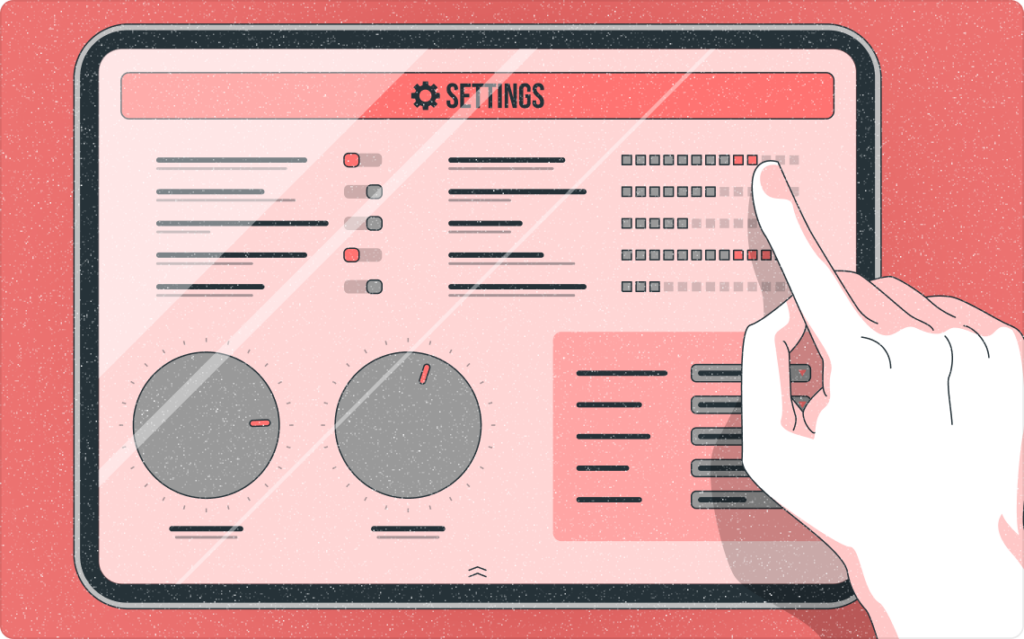Unlocking Payroll Efficiency: Choosingthe Right Pay Period for Your Business

Understanding Pay Periods: Definitions and Implications
The Basics of Pay Periods
Understanding the basics of pay periods is crucial for any business owner or payroll administrator. A pay period is the recurring length of time over which employee time is recorded and paid. These periods can vary in length, typically ranging from weekly to monthly intervals. The choice of pay period has significant implications for both the employer and the employee.
Several factors influence the selection of a pay period. The type of business, the number of employees, and the complexity of payroll processing requirements are all critical considerations. For instance, a small business with a handful of employees may opt for a simpler, more frequent pay schedule, while a larger corporation might choose a less frequent pay period to reduce administrative burden.
Choosing the right pay period is a balance between meeting legal obligations, managing cash flow, and accommodating employee preferences. It’s important to understand that there is no one-size-fits-all solution; each business must assess its unique situation to determine the most appropriate pay schedule.
How Pay Periods Affect Cash Flow
The timing of pay periods can have a significant impact on a business’s cash flow. When paychecks are issued more frequently, such as with weekly pay periods, the company must ensure that sufficient funds are available more often. This can lead to a higher administrative burden and potentially affect the company’s liquidity.
Conversely, less frequent pay periods, like monthly schedules, may improve cash flow management by consolidating payroll expenses into a single, predictable outflow. However, this could also result in larger sums of cash leaving the business at once, which requires careful financial planning to avoid cash shortages.
For example, in industries where revenue is earned and recognized at regular intervals, aligning pay periods with these cycles can optimize cash flow. In contrast, industries with irregular income streams might benefit from a more flexible pay schedule to accommodate the ebb and flow of cash availability.
| Pay Period Frequency | Cash Flow Impact |
|---|---|
| Weekly | Higher frequency of payroll outflows; may strain cash reserves |
| Bi-Weekly | Balances frequency with cash flow management |
| Semi-Monthly | Predictable outflows; can align with fixed billing cycles |
| Monthly | Consolidates expenses; requires careful planning |
It’s important for businesses to consider their specific cash flow patterns when choosing a pay period. For instance, the construction industry often experiences a weekly cash flow, making weekly pay periods a more natural fit for both employers and employees.
Legal Considerations in Pay Period Selection
When selecting a pay period, it’s crucial to consider the legal framework governing wage payments in your jurisdiction. Regulations can vary significantly, and non-compliance can lead to penalties. For instance, some states mandate a minimum frequency for wage payments, while others may have specific rules for different categories of workers.
Key legal factors to consider include:
- Minimum Pay Frequency: Laws often dictate the minimum frequency at which employees must be paid. Failure to adhere to these regulations can result in fines.
- Final Paycheck Rules: Termination of employment brings its own set of legal requirements for when and how the final paycheck should be issued.
- Overtime Calculations: The pay period you choose can affect how overtime is calculated and paid, with potential legal implications if done incorrectly.
It’s advisable to consult with a labor law expert or use legal resources to ensure your pay period aligns with all relevant laws and regulations. Regularly reviewing these laws is also important as they can change, impacting your payroll compliance.
Get more out of your business
Get the best employee engagement content every week via mailing list

Evaluating Business Needs: Aligning Pay Periods with Operations
Assessing Your Business Cycle
When choosing the right pay period, it’s crucial to consider the unique business cycle of your organization. This involves understanding the timing of your revenue streams and expenses, and how they correlate with your workforce’s labor. For instance, if your company experiences a predictable influx of income at specific times, aligning your pay periods with these peaks can improve cash flow management.
To effectively assess your business cycle, consider the following factors:
- The frequency and regularity of income generation
- The timing of predictable expenses, such as rent, utilities, and supplier payments
- Seasonal variations in business volume
- Project-based work that may result in irregular income
By analyzing these elements, you can determine a pay period structure that supports your business’s financial health and operational stability. For example, a company with a semi-monthly pay period structure might have pay periods that run from the 1st to the 15th and from the 16th to the last day of the month, ensuring a consistent flow of funds to cover payroll expenses.
Employee Considerations and Morale
When selecting a pay period, it’s crucial to consider the impact on employee morale. The frequency of pay can significantly influence how employees perceive their financial stability and job satisfaction. For instance, more frequent pay periods may lead to a sense of immediate reward for work done, potentially boosting morale and productivity.
However, it’s important to balance this with the potential for increased administrative tasks for the payroll department. Employees often appreciate the predictability and consistency of their pay schedule, which helps them manage personal finances better. Below is a list of employee-focused considerations when choosing a pay period:
- Predictability of income: Regular and predictable paychecks can reduce financial stress for employees.
- Alignment with expenses: Pay periods that match up with common bill cycles can facilitate better financial planning.
- Financial stability: More frequent pay may help employees feel more secure in their financial situation.
- Employee preferences: Some employees might prefer less frequent, but larger paychecks.
Understanding these considerations can guide businesses in making a decision that not only meets operational needs but also supports the well-being of their workforce.
Administrative Capacity and Payroll Processing
When selecting a pay period, it’s crucial to consider your business’s administrative capacity. This includes the ability to manage payroll processing efficiently without overburdening your staff. For smaller businesses, a simpler pay schedule may be more manageable, while larger organizations might benefit from more frequent pay periods despite the increased administrative load.
To ensure a smooth payroll process, here are some best practices:
- Establish Clear Policies & Procedures: Having well-defined guidelines helps streamline payroll management.
- Invest in Robust Payroll Software: Automation can significantly reduce the time and effort required to process payroll.
- Maintain Accurate Employee Records: Up-to-date information is essential for accurate payroll calculations.
- Stay Abreast of Regulatory Changes: Compliance with labor laws is non-negotiable and requires constant vigilance.
By aligning your pay period with your administrative capabilities, you can create a payroll system that is both efficient and sustainable.

Exploring Pay Period Options: Pros and Cons
Weekly Pay Periods: Flexibility vs. Administrative Load
Choosing a weekly pay period offers the highest level of flexibility for employees, providing them with a consistent and frequent income stream. This can be particularly beneficial for hourly workers or those who rely on regular cash flow to manage their personal finances. However, the increased frequency of payroll processing can place a significant administrative burden on the business.
The administrative load associated with weekly pay periods is not to be underestimated. It requires diligent planning and resource allocation to ensure payroll is processed accurately and on time. Here’s a breakdown of the key administrative tasks involved:
- Payroll calculation: Every week, hours worked and any overtime must be accurately recorded and calculated.
- Payroll taxes: Withholding and reporting taxes must be done more frequently, increasing the chance of errors.
- Payroll processing: The physical or digital processing of payroll must be completed each week.
- Record keeping: Maintaining up-to-date records is more critical when transactions are more frequent.
Despite these challenges, many businesses find that the benefits of a weekly pay period align well with their operational needs and employee satisfaction. It’s crucial to weigh these factors against the administrative capabilities of your payroll team before making a decision.
Bi-Weekly vs. Semi-Monthly: Understanding the Differences
When it comes to selecting a pay schedule, businesses often weigh the merits of bi-weekly and semi-monthly pay periods. Bi-weekly pay periods result in employees receiving a paycheck every other week, typically leading to 26 paychecks per year. On the other hand, semi-monthly pay periods ensure employees are paid twice a month, often on the 1st and 15th, which translates to 24 paychecks annually.
The choice between these two schedules can have significant implications for both the employer and the employee. For instance, bi-weekly pay periods are straightforward and align well with weekly work schedules, making them a popular choice for hourly employees. Conversely, semi-monthly pay periods can be more complex due to the variation in the number of workdays each pay period, but they may simplify budgeting for salaried employees.
Here’s a quick comparison to highlight the key differences:
Bi-Weekly Pay Periods:
- Paychecks issued 26 times a year
- Consistent pay dates every other week
- Easier calculation for overtime
Semi-Monthly Pay Periods:
- Paychecks issued 24 times a year
- Fixed pay dates, typically the 1st and 15th
- Pay dates may vary in day of the week
Understanding these differences is crucial for businesses to make an informed decision that benefits both their operational needs and their employees’ preferences.
Monthly Pay Periods: Streamlining for Efficiency
Opting for a monthly pay period can be a strategic move for businesses looking to streamline their payroll processes. This approach reduces the frequency of payroll runs, which can lead to significant savings in both time and administrative costs. However, it requires a stable cash flow to ensure that all employees are paid on time, every time.
The primary advantage of monthly pay periods is the reduction in processing time and costs. With only twelve payrolls to process each year, the administrative burden is considerably lower compared to more frequent pay periods. This can be particularly beneficial for small businesses with limited payroll staff.
| Pros | Cons |
|---|---|
| Fewer payroll runs | Requires stable cash flow |
| Lower administrative costs | Less frequent pay for employees |
| Simplified budgeting | Potential impact on employee morale |
Despite the efficiency gains, monthly pay periods may not be suitable for all employees. The longer interval between paychecks can be challenging for those who are less financially secure or who rely on more frequent payments to manage their budget. It’s crucial for employers to consider the financial well-being of their workforce when deciding on a pay period structure.

Implementing Your Chosen Pay Period
Transitioning to a New Pay Schedule
Changing your company’s pay schedule can be a complex process, but with careful planning and communication, it can lead to greater efficiency and satisfaction. Begin by establishing a clear transition plan that outlines the steps and timeline for the change. Ensure that this plan is compliant with all relevant labor laws to avoid legal complications.
Next, consider the practical aspects of the transition. You may need to adjust your payroll system or work with your payroll provider to accommodate the new schedule. This could involve changes to payroll software settings, tax withholding adjustments, and updates to employee information.
Communication with your employees is crucial. They should be informed well in advance of the change, and you should provide resources to help them understand the implications for their paychecks. Consider creating a FAQ document or holding informational meetings to address any concerns they may have.
Finally, be prepared to offer support during the transition period. Some employees may experience financial strain during the switch, especially if there is a longer gap between paychecks. Explore options such as partial pay advances or financial planning assistance to ease this burden.
Payroll Software and Automation Tools
In the realm of payroll, software and automation tools are game-changers, offering a myriad of features that streamline the entire pay process. From calculating hours and deductions to generating pay slips and reports, these tools can significantly reduce the time and effort required to manage payroll.
Selecting the right payroll software is crucial. It should align with your business size, needs, and the pay period you’ve implemented. For instance, some software excels in handling complex calculations for bi-weekly pay periods, while others may offer superior scheduling features for weekly payouts.
To aid in your selection, consider the following factors when evaluating payroll software:
- Ease of use: The interface should be intuitive, allowing for quick adoption and minimal training.
- Integration capabilities: It should seamlessly integrate with your existing HR and accounting systems.
- Compliance features: Look for software that stays updated with tax laws and regulations to ensure compliance.
- Customer support: Reliable customer service is essential for addressing any issues that may arise.
Remember, the goal is to find a tool that not only saves time but also ensures accuracy and compliance. For a comprehensive guide on the latest payroll software, refer to the article, ’10 Best Automated Payroll Software To Save You Time In 2024′, which compares features, pricing, and more to help you make an informed decision.
Communicating Changes to Employees
When implementing a new pay schedule, clear and transparent communication with your employees is crucial. It’s important to explain the reasons for the change and how it will affect their paychecks. This openness will help employees understand the structured basis behind the decision, ensuring that they feel they are being paid fairly.
To facilitate this process, consider the following steps:
- Schedule an all-hands meeting to announce the upcoming changes.
- Provide detailed FAQs that address potential concerns and questions.
- Offer one-on-one sessions for employees who need further clarification.
- Ensure that all communication is consistent and accessible, using multiple channels if necessary.
Remember, the goal is to maintain trust and morale by demonstrating that the decision was made with careful consideration and transparency.

Monitoring and Adjusting Your Pay Period Strategy
Regular Review and Impact Assessment
To maintain payroll efficiency and ensure that the chosen pay period aligns with the evolving needs of the business, it is crucial to conduct regular reviews and impact assessments. This process involves analyzing various aspects of the payroll system, including employee satisfaction, budgetary implications, and compliance with overtime laws and state requirements.
A structured approach to reviewing the pay period strategy can be outlined in the following steps:
By systematically addressing these areas, businesses can make informed decisions about whether to maintain their current pay period or transition to a new schedule that better suits their operational needs and employee preferences.
Adapting to Growth and Scaling Challenges
As businesses expand, the payroll system must be scalable to accommodate new employees and possibly more complex compensation structures. Growth often necessitates a reevaluation of the current pay period strategy to ensure it still aligns with the company’s evolving needs.
When scaling, it’s crucial to maintain a balance between payroll efficiency and the ability to manage an increasing number of transactions. This may involve upgrading payroll software or adopting new automation tools. Additionally, businesses should consider the impact of scaling on their budget and administrative capacity.
To effectively manage these changes, companies should follow a set of best practices. These include being aware of budget constraints, adjusting schedules and pay periods accordingly, and setting clear guidelines for staffing strategies and promotions. Regularly reviewing these practices will help ensure that the payroll system remains efficient and compliant as the business grows.
Staying Compliant with Changing Regulations
In the ever-evolving landscape of employment law, staying abreast of regulatory changes is crucial for maintaining payroll compliance. As new legislation is enacted and existing laws are updated, businesses must adapt their payroll processes to avoid costly penalties and legal issues.
To ensure compliance, companies should establish a routine for monitoring legal updates. This can involve subscribing to newsletters from legal experts, joining professional organizations, or consulting with a payroll compliance specialist. Additionally, implementing a compliance calendar can help keep track of important deadlines and changes.
Regular training sessions for the payroll team are also essential. These sessions can cover recent regulatory changes and reinforce best practices. By investing in ongoing education, businesses can empower their staff to handle compliance proactively.
Lastly, it’s important to document all payroll procedures and any changes made to them. This documentation serves as a record that can be invaluable during audits or legal proceedings. It demonstrates a company’s commitment to compliance and can be a key factor in mitigating any potential disputes.
Conclusion
Choosing the right pay period is a critical decision that can significantly impact the efficiency of your payroll process and the satisfaction of your employees. By understanding the different types of pay periods and considering the unique needs of your business, you can select a schedule that optimizes cash flow, complies with legal requirements, and aligns with employee expectations. Remember, the goal is to find a balance that supports your business operations while also providing convenience and predictability for your workforce. As you reflect on the insights provided in this article, take the time to evaluate your current payroll system and consider if a change in pay period could unlock greater efficiency and productivity for your business.
Frequently Asked Questions
How do different pay periods impact a business's cash flow?
Different pay periods can affect a business’s cash flow by determining how often payroll must be processed. Shorter pay periods may lead to more frequent payouts, affecting liquidity, while longer pay periods might help with cash flow management but could impact employee morale.
What legal factors must I consider when selecting a pay period?
When selecting a pay period, you must consider federal, state, and local labor laws that regulate minimum pay frequency, overtime calculations, and record-keeping requirements.
Should my business's operational cycle influence my choice of pay period?
Yes, your business’s operational cycle should be a key factor in choosing a pay period. Aligning payroll with revenue cycles can improve cash flow management and operational efficiency.
What are the main differences between bi-weekly and semi-monthly pay periods?
Bi-weekly pay periods result in 26 paychecks per year, with paydays typically every other week. Semi-monthly pay periods result in 24 paychecks per year, with paydays usually on the 15th and the last day of the month, which can vary in frequency per month.
[18:03] Julia Goncharova How can I smoothly transition my business to a new pay schedule?
Transitioning to a new pay schedule requires careful planning, clear communication with employees, and possibly the use of payroll software to automate the process and ensure compliance with wage laws.


